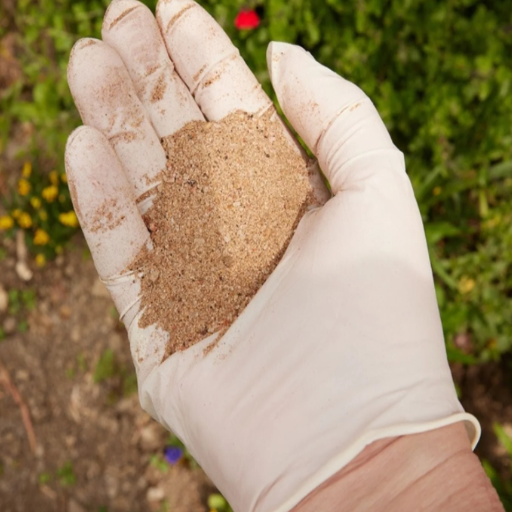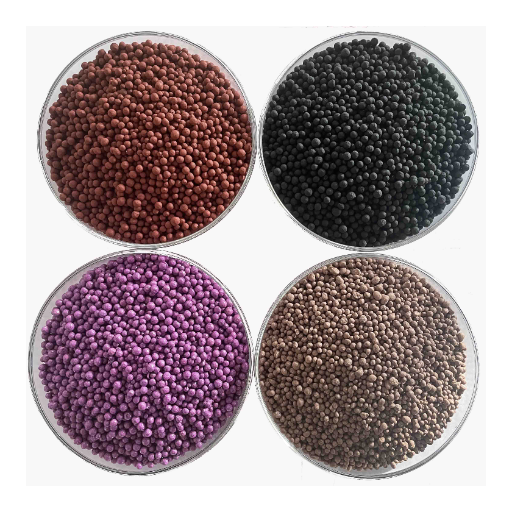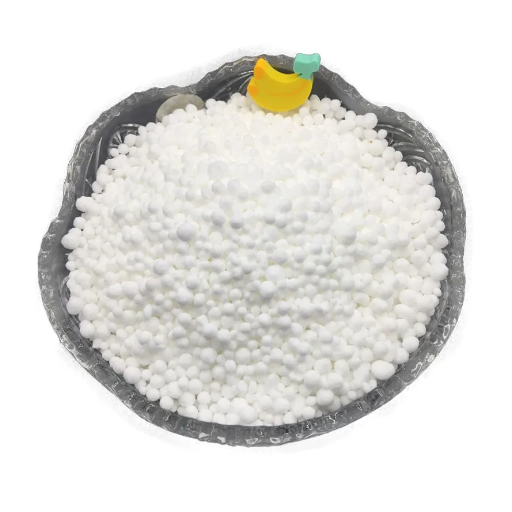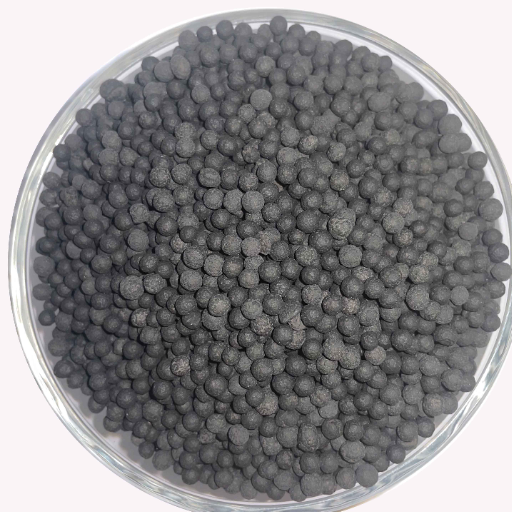Understanding Phosphorus in Agriculture

The Role of Phosphorus in Plant Development
The plant-growing developmental stages see phosphorus as a key nutrient because it supports a multitude of critical physiological functions. Phosphorus essentially forms an energy transfer system within the plant, agitating molecules such as adenosine triphosphate (ATP) to furnish energy for the cellular functions. Phosphorus is also required for the photosynthetic process, nutrient translocation, and transformation of energy into a state usable by the plant for growth and reproduction.
Key Functions of Phosphorus in Plants:
- Energy transfer through ATP formation
- Photosynthesis support
- Root development and branching
- DNA and RNA synthesis
- Flowering and fruiting promotion
Besides being necessary in developing strong root systems to anchor the plant so that it may efficiently take up water and nutrients, phosphorus causes early root development and root branching so that plants may better access essential resources in the soil. Strong root systems during their early growth are necessary to lay the groundwork for healthy and sturdily erect plants.
Phosphorus Deficiencies: Signs and Solutions
Phosphorus deficiencies in plants are usually diagnosed through certain visible and physiological symptoms:
| Symptom | Description | Affected Plant Parts |
|---|---|---|
| Dark Green Foliage | Leaves appear unusually dark green | All leaves, especially older ones |
| Purplish Discoloration | Purple or reddish tints on leaf edges | Older leaves primarily |
| Stunted Growth | Reduced overall plant size and vigor | Entire plant |
| Delayed Maturity | Slower flowering and fruit development | Reproductive organs |
Immediate Solutions for Phosphorus Deficiency:
- Apply phosphorus-based fertilizers (MAP or DAP)
- Use organic alternatives like bone meal or composted manure
- Conduct soil tests before application
- Maintain optimal soil pH (6.0-7.5)
Natural Phosphorus Sources
Phosphorus from natural sources serves as a critical element for ensuring sustainable agricultural systems:
- Phosphate Rock: Sedimentary rock high in phosphorus minerals
- Animal Manure: Phosphorus content derived from livestock feed
- Compost: Decomposed organic matter with phosphorus content
- Bone Meal: Ground animal bones rich in phosphorus
- Recycled Sources: Wastewater and food waste phosphorus recovery
Benefits of Using Organic Phosphorus Fertilizers

Promoting Healthy Plant Growth
These fertilizers which have organic phosphorus, are of critical importance in ensuring healthy plant development by improving soil fertility and offering a sustainable source of nutrients. According to research, phosphorus availability has a tremendous impact on early root development, crucial for nutrient uptake and physical stability of plants.
Advantages of Organic Phosphorus Fertilizers:
- Slow-release nutrient availability
- Reduced environmental runoff
- Enhanced microbial soil activity
- Sustainable alternative to synthetic fertilizers
- Improved soil structure and fertility
Improving Root Development and Stability
The presence of organic phosphorus fertilizers has a significant influence on root biomass and structural integrity. Phosphorus is the most important macronutrient required for the very early stage of root development since it is mainly involved in cellular division and elongation of the root tissue.
Organic formulations ensure slow release of phosphorus in a bioavailable form, which allows steady absorption of nutrients without saturation or leaching of nutrients downstream. Studies reveal that soils amended with organic materials improve CEC and microbial activity so that the root environment evolves to assist root elongation and lateral branching.
Boosting Flowering and Fruiting in Plants
To promote flowering and fruiting, plants must be provided with optimum conditions for growth. These basic factors include nutrients, light, and environmental factors:
| Factor | Requirement | Impact on Plants |
|---|---|---|
| Nutrients | High phosphorus and potassium | Flower formation and fruit development |
| Light Quality | Appropriate photoperiod | Triggers the reproductive phase |
| Temperature | Species-specific optimal range | Affects flowering and fruit set |
| Humidity | Proper moisture levels | Supports the pollination process |
Common Types of High Phosphorus Fertilizers
Bone Meal as a Rich Organic Source
Bone meal is a well-known organic fertilizer and is considered an excellent source of phosphorus and calcium. It is obtained from animal bones that are steamed and pulverized into fine powder.
| Component | Content Percentage | Benefits |
|---|---|---|
| Phosphorus | 15-20% | Root development, flowering, fruiting |
| Calcium | ~12% | Cell wall strength, nutrient uptake |
Best Applications for Bone Meal:
- Root crops (carrots, turnips)
- Flowering plants (roses, tulips)
- pH range: 6.0-7.0 (slightly acidic to neutral)
- Enhanced with microbial inoculants for better solubility
Rock Phosphate: Nature’s Phosphate Source
Rock phosphate, a naturally occurring mineral material, is rich in phosphorus, one of the three primary macronutrients essential for plant growth. It is mined from sedimentary rock deposits formed millions of years ago from ancient animal remains and marine life.
- Primary Component: Apatite (group of phosphate minerals)
- Phosphorus Content: 27-37%
- Release Properties: Slow-release, long-term phosphorus source
- Environmental Benefit: Reduces the risk of phosphorus leaching
Organic Manure: A Versatile Fertilizer
Organic manure is one crucial constituent of sustainable agriculture and is highly esteemed for its ability to amend soil structure, catalyze microbial activity, and provide essential nutrients for an extended period.
Benefits of Organic Manure:
- Increases soil organic matter
- Improves water retention capacity
- Enhances soil erosion resistance
- Can increase crop yields up to 20%
- Provides slow-release nutrients (N, P, K)
How to Effectively Use Organic Phosphorus Fertilizers

Application Techniques for Different Plant Types
Spread fertilizers evenly over the planting surface for wheat, maize, and rice. Incorporate into the top 4-6 inches of soil for optimal root access.
Place fertilizer in concentrated bands 2 inches below and 2 inches to the side of seeds for potatoes, carrots, and beets. Increases nutrient uptake efficiency up to 30%.
Apply nutrients on foliage during flowering and fruiting for fruit-bearing trees. Increases plant vigor and improves fruit set.
Dissolve fertilizers and deliver through drip irrigation for citrus, apple, and olive trees. Reduces fertilizer use by 15-20% while maintaining productivity.
Timing Your Fertilizer Applications
| Application Timing | Purpose | Benefits |
|---|---|---|
| Pre-Planting | Establish a nutrient base | Improved seedling vigor and early growth |
| Split Application | Steady nutrient supply | Prevents leaching, improves uptake efficiency |
| Key Growth Stages | Support critical periods | Up to 12% increase in grain yield |
| Post-Harvest | Restore soil reserves | Preparation for the next growth cycle |
| Season-Based | Weather consideration | Minimize runoff, maximize efficiency |
Creating Homemade Phosphorus Fertilizer
Organic phosphorus fertilizer production hinges upon recycling materials naturally rich in phosphorus:
- Bone Meal Preparation:
- Boil bones to release excess fats
- Grind into fine powder
- Apply for quick phosphorus release
- Rock Phosphate Mix:
- Mix ground rock phosphate with compost or manure
- Increases solubility and nutrient availability
- Best for perennials with slow-release needs
- Wood Ash Application:
- Use hardwood ash as a phosphorus source
- Sieve to remove coarse material
- Apply moderately to avoid alkalinity issues
Selecting the Best Organic Phosphorus Fertilizers

Evaluating Quality and Sustainability
In choosing an organic phosphorus fertilizer, one should consider the composition of nutrients as well as whether it is produced and sourced sustainably. The best organic phosphorus fertilizers maintain a balance with their release of nutrients so that these nutrients will be available to plants for a long time without excessive environmental leaching.
| Fertilizer Type | Sustainability Score | Phosphorus Availability | Environmental Impact |
|---|---|---|---|
| Bone Meal | High | Medium-High | Low |
| Rock Phosphate | Medium | Medium | Medium (mining impact) |
| Composted Manure | High | Medium | Low |
Understanding Phosphorus Availability in Fertilizers
Phosphorus availability hinges on several vital variables, particularly soil pH level, temperature, moisture content, and the chemical form of phosphorus present in the fertilizer material.
Phosphorus Recovery Rates:
- Conventional Systems: 10-25% average recovery
- Enhanced Systems: Improved efficiency with fertigation or deep-banding
- Precision Agriculture: Optimized delivery through soil mapping and sensors
Frequently Asked Questions (FAQ)
References
Phosphorus fertilizers for organic farming systems
Colorado State University Extension document discussing the role of phosphorus in organic farming systems and its sources.
Phosphorus in organic waste-soil systems
Study investigating the use of organic fertilizers with high phosphorus bioavailability in soil systems.
Organic soil amendments for sustainable agriculture
University of Hawaii guide containing information about organic sources of nitrogen, phosphorus, and potassium for sustainable agriculture.







